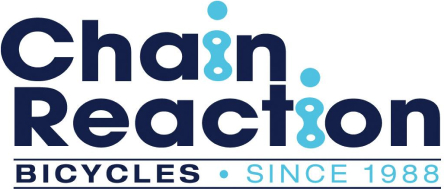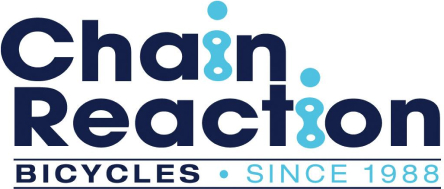Bike training: How to Train for Your Spring/Summer Tour

With summer right around the corner, it’s time to start thinking about your training plan. Whether you’re planning on riding the Cabot Trail, cycling through the Canadian Rockies, a bike tour through Europe, or riding locally, it’s important to start planning your bike training regimen early.
Training for a bike tour is no easy feat. There are a lot of factors to consider, including your current fitness level, the length of your bike tour, and the elevation profile. In this blog post, we’ll cover the basics of bike training and provide you with our tips and tricks to help you get started.
Bike Training Basics
The first step to creating a bike training plan is understanding the basics of bike training. When it comes to bike training, there are a few key factors to consider.
1. Frequency
The first factor to consider when creating a bike training plan is frequency. How often do you plan on riding? For many cyclists, 3-5 rides per week is a good starting point.
2. Duration
The second factor to consider is ride duration. How long are your rides going to be? For many cyclists, long rides will range from 2-4 hours.
3. Intensity
The third factor to consider is intensity. Intensity is arguably the most important factor when it comes to bike training. While it’s easy to get caught up in the number of kilometers you’re riding each week, it’s important to remember that the intensity of your rides is what matters most.
To gauge the intensity of your ride you can use a heart rate monitor and a power meter for maximum accuracy. However, if you don’t have access to either of these, perceived exertion is a good alternative. Listen to your body and how you feel during and after your bike training session.
4. Recovery
The final factor to consider is recovery. Recovery is what allows your body to adapt to the stress that you place on it during your rides. Without recovery, your body won't be able to adapt to the stress of your rides, reducing your ability to make fitness gains. You’ll also put yourself at an increased risk of injury from overtraining.
That’s why your bike training plan should include both active recovery and complete rest days. Active recovery rides should be easy, low-intensity rides that allow your body to flush out any metabolic waste products that have accumulated in your muscles.
Other tips to aid recovery include ensuring that you’re fueling your body during rides. We recommend always keeping energy gels in the back pocket of your jersey and hydrating with an electrolyte drink.
It’s also a good idea to keep some chamois cream on hand. As you build up your endurance for the amount of time you can spend in the saddle, there’s no doubt you’ll encounter discomfort at some point. We’ve all been there!
Creating a Bike Training Plan
Now that you understand the basics of bike training, it’s time to create your bike training plan. We recommend following a 4-week training cycle. Each week will include 3-5 rides and 2 rest days. However, the duration of each ride and the intensity will vary.
Week 1: Base Building
The first week of your bike training plan will focus on base building. Base building is the foundation of any good bike training plan. The goal of base building is to increase your aerobic capacity and improve your endurance.
During week 1, you should aim to complete 3-5 rides. However, the duration of each ride should be relatively short. Aim to keep the intensity of your rides low. The goal of week 1 is to accumulate time in the saddle while riding at a low intensity.
Week 2: Endurance
The second week of your bike training plan will focus on endurance. During week 2, you should aim to complete 3-5 rides. The duration of each ride should increase slightly. However, the intensity of your rides should remain low.
The goal of week 2 is to continue building your base while increasing your ride duration. However, this doesn’t mean that you should go out and ride for 4 hours. Instead, focus on gradually increasing the duration of your rides.
Week 3: Intervals
The third week of your bike training plan will focus on intervals. Intervals are short, high-intensity efforts that are designed to increase your V02 max. V02 max is the maximum amount of oxygen that your body can use during exercise.
During week 3, you should aim to complete 3-5 rides. However, the duration of each ride will decrease. The goal of week 3 is to complete 2-3 interval sessions. Interval sessions typically last about 1 hour.
Week 4: Recovery
The final week of your bike training plan will focus on recovery. During week 4, you should aim to complete 3-5 rides. However, the duration of each ride should be relatively short. The goal of week 4 is to recover from the stress that you’ve placed on your body during the previous 3 weeks.
Bike Training Tips
Before we wrap up, we want to leave you with a few bike training tips.
1. Don’t Overdo It
The first tip is to not overdo it. While it may be tempting to go out and ride as hard and as long as you can, it’s important to remember that more isn’t always better. Overtraining is a real risk. As a result, it’s important to listen to your body. If you’re feeling fatigued, it’s okay to take an extra rest day.
2. Train Smart
As we mentioned earlier, the intensity of your rides is what matters most. It’s important to remember that you don’t need to go out and ride hard every day. Most of your rides should be relatively low-intensity.
3. Invest in Quality Cycling Accessories
If you’re serious about training for your bike tour, we recommend investing in quality cycling accessories. Of course, it’s important to have a solid bike, but it’s equally important to have a high-quality pair of shoes, apparel, cycling computer and monitor, as well as nutrition and body care to aid your recovery.
4. Listen to Your Body
The final tip is to listen to your body. If you’re feeling fatigued, it’s okay to take an extra rest day. Likewise, if you’re feeling good, it’s okay to go out and push yourself a little bit.
Conclusion
Consistency and gradual progress are essential in preparing for summer bike tours. By adhering to a structured training regimen focused on frequency, duration, intensity, and recovery, you can optimize your touring performance this summer.
Always listen to your body's signals and incorporate adequate rest for effective adaptation and injury prevention. Remember our tips: don’t overdo it, train smart, invest in quality cycling accessories, and listen to your body.
At Chain Reaction, we offer a variety of cycling gear and nutritional products that will help you train for your summer bike tour. From tech accessories to cycling jerseys, we have everything you need to train for your summer bike tour.




